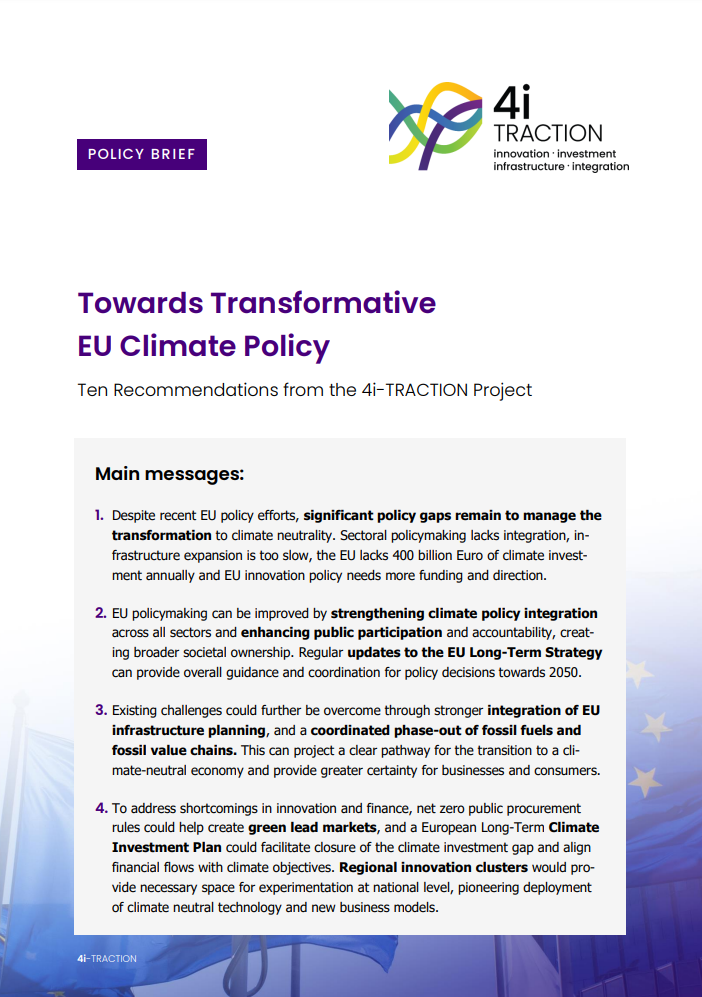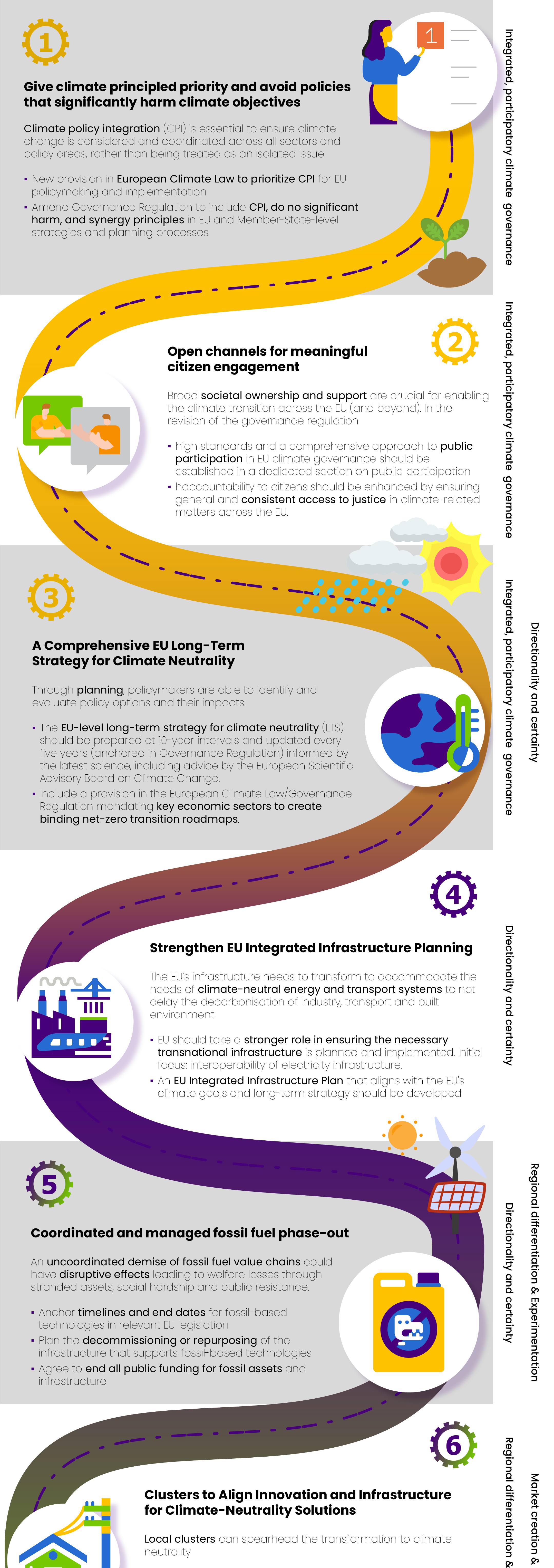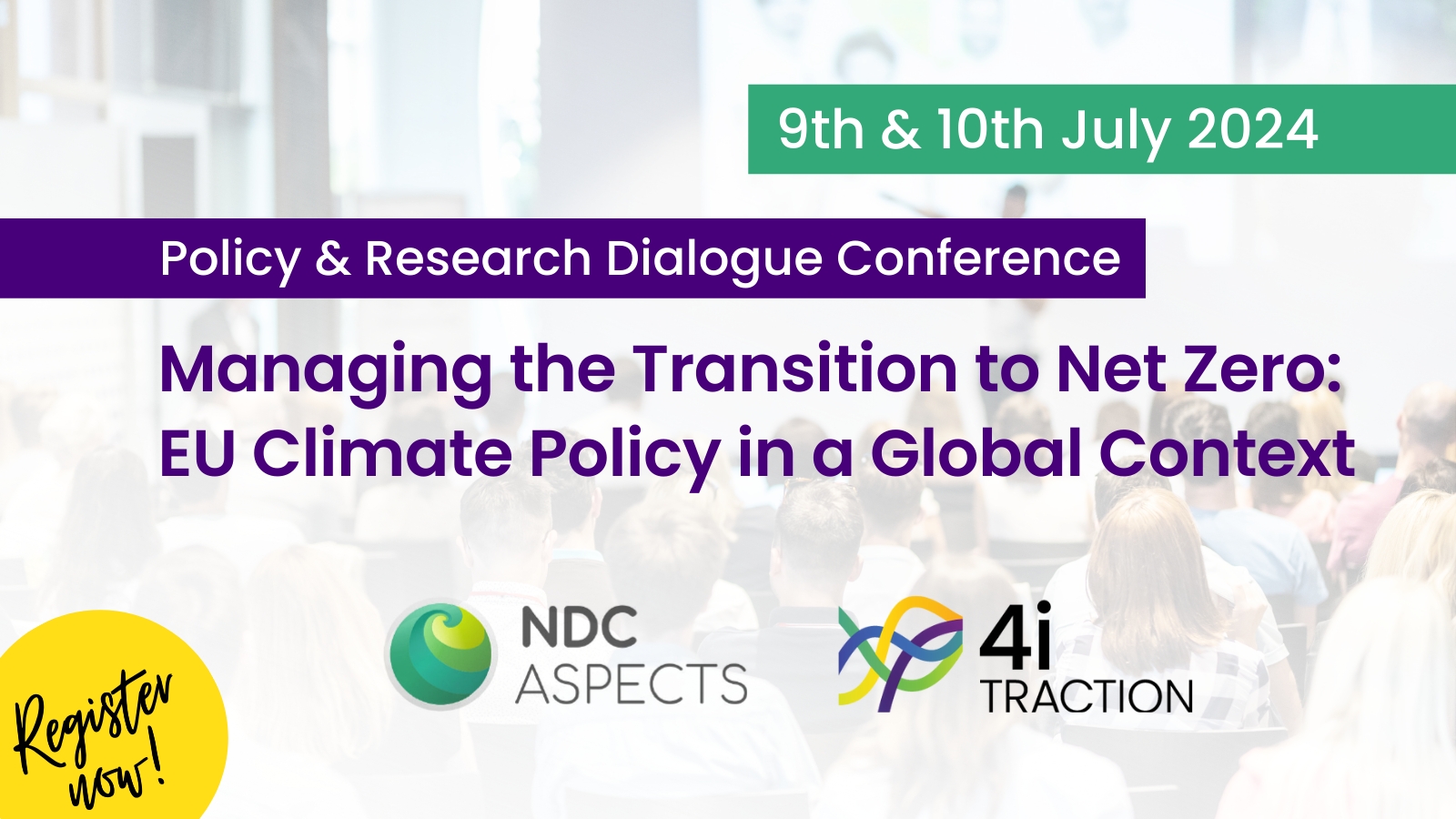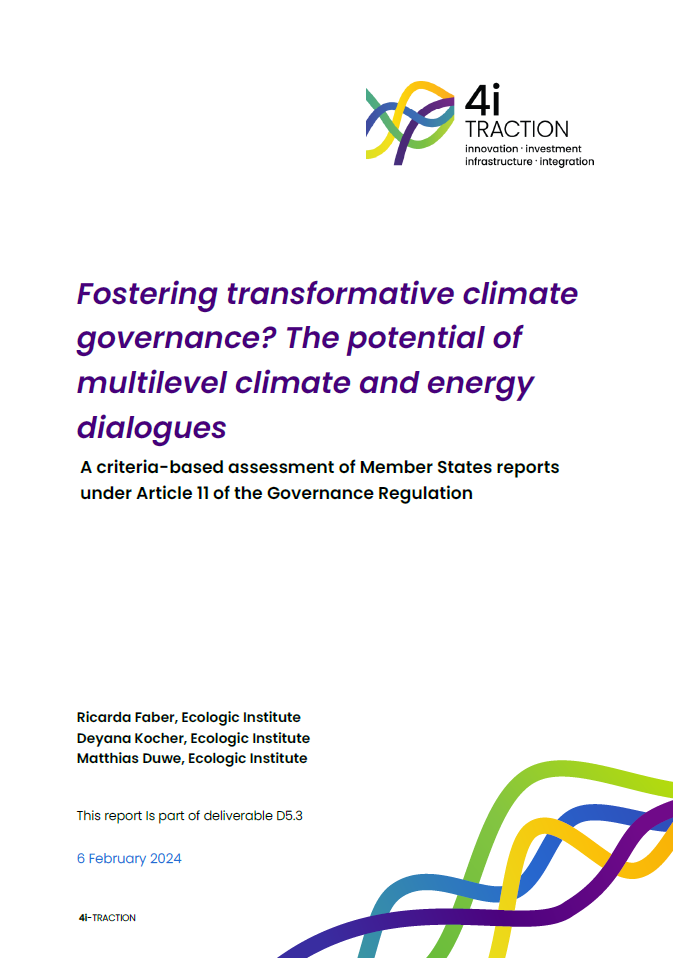Towards Transformative EU Climate Policy
Ten Recommendations from the 4i-TRACTION Project
- Publication
- Citation
4i-TRACTION (2024): Towards Transformative EU Climate Policy. Ecologic Institute, Berlin.
The EU has set itself the goal to become the first climate-neutral continent. The European Green Deal, the European Climate Law and the Fit-for-55 package are core steps to strengthen EU climate policy, and to deliver on the EU’s ambition to create a net-zero emissions economy. But despite these efforts, the EU is not on track to climate neutrality by 2050.
Based on extensive analysis of the EU’s existing climate policy instruments and current governance framework, the 4i-TRACTION project finds that several gaps remain across the entire EU climate governance. In the new legislative term 2024-2029, the EU has the chance to close these gaps and accelerate the necessary changes towards climate neutrality. In this policy brief, we outline ten recommendations for EU climate policy going forward.
The key messages include:
- Despite recent EU policy efforts, significant policy gaps remain to manage the transformation to climate neutrality. Sectoral policymaking lacks integration, infrastructure expansion is too slow, the EU lacks 400 billion Euro of climate investment annually and EU innovation policy needs more funding and direction.
- EU policymaking can be improved by strengthening climate policy integration across all sectors and enhancing public participation and accountability, creating broader societal ownership. Regular updates to the EU Long-Term Strategy can provide overall guidance and coordination for policy decisions towards 2050.
- Existing challenges could further be overcome through stronger integration of EU infrastructure planning, and a coordinated phase-out of fossil fuels and fossil value chains. This can project a clear pathway for the transition to a climate-neutral economy and provide greater certainty for businesses and consumers.
- To address shortcomings in innovation and finance, net-zero public procurement rules could help create green lead markets, and a European Long-Term Climate Investment Plan could facilitate closure of the climate investment gap and align financial flows with climate objectives. Regional innovation clusters would provide necessary space for experimentation at national level, pioneering deployment of climate neutral technology and new business models.








